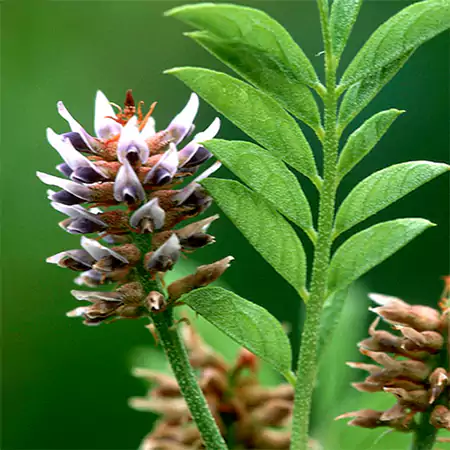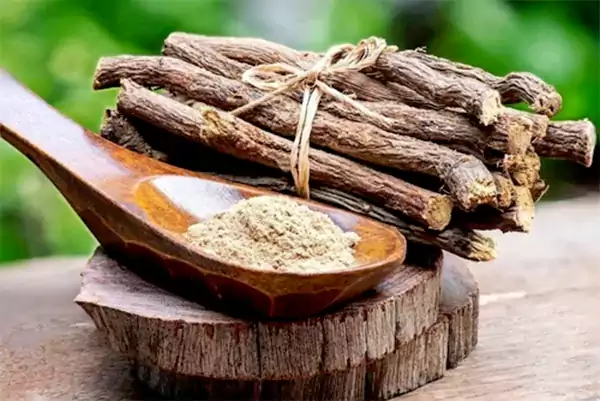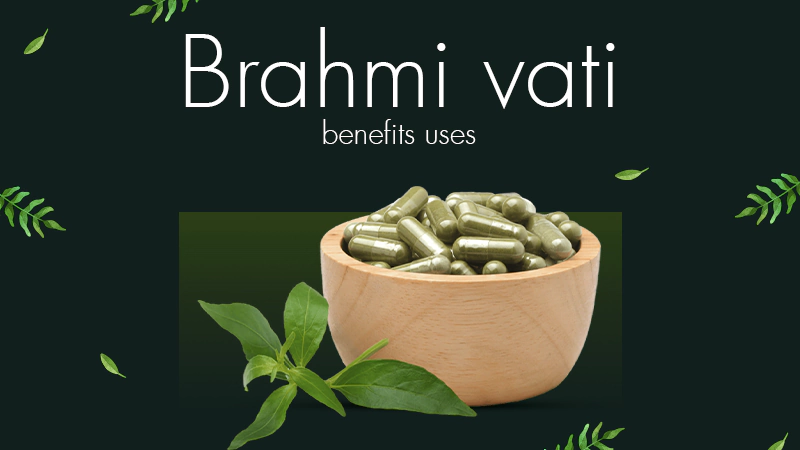Yashtimadhu or Mulethi is part of my core childhood memory. My mother used to give me this magical herb for chewing to boost my immunity and fight against cough or cold. Similarly, Yashtimadhu has been an integral part of every Indian household for thousands of years.
This sweet-tasting root is one of the most commonly used Ayurvedic herbs to restore energy and immunity, soothing the throat, and improving overall health.
In this detailed guide, I will cover all the amazing things about Yashtimadhu, including the key mulethi benefits, its uses, forms, recommended dosage, possible side effects, and more.
What is Yashtimadhu (Mulethi)?

| Language | Name |
| Sanskirt | Yashtimadhu |
| Hindi | Mulethi |
| English | Licorice |
| Botancial | Glycyrrhiza glabra |
Yashtimadhu is a powerful Rasayana (rejuvenating herb) in Ayurveda. It has been helping people for centuries to combat respiratory issues, digestive discomfort, stress, etc. ‘Yashti’ means wood, and ‘Madhu’ means honey, which refers to its naturally sweet roots. These roots are around 40-50 times sweeter than sugar.
Mulethi’s meaning can be understood by its historic value. We can find its use in ancient Ayurvedic, Chinese, Greek, and Roman medicine. You will be surprised to know that the traces of Licorice were also found in the tomb of an Egyptian Pharaoh.
The plant can grow up to 3 meters tall and is mostly found in India, Iran, and Afghanistan. Mulethi, which is the root, is the most valuable part of the plant. It is packed with compounds that make it beneficial for inflammation, stress relief, and overall wellness. Plus, Yashtimadhu churna can help you with a sore throat, cough, ulcers, and acidity.
Nutritional Profile of Mulethi/Yashtimadhu
| Nutrient | Approximate Nutritional Value (per 100 g) |
| Calories | 375 kcal |
| Carbohydrates | 93 g |
| Sugars | 5 g |
| Protein | 0 g |
| Fat | 0 g |
| Fiber | 0 g |
| Iron | 5 mg |
| Magnesium | 20 mg |
| Phosphorus | 50 mg |
| Sodium | 50 mg |
| Potassium | 0 mg |
| Calcium | 50 mg |
| Active Compound | Yashtimadhu Benefits |
| Glycyrrhizin | Helps with acidity, throat irritation, ulcers, lung issues, and digestive health |
| Saponins | Improves your immune system and builds resistance against infections |
| Flavonoids | Natural antioxidants in the compound can protect your skin and heart, and reduce oxidative stress |
| Phystoestrogens | Supports hormonal balance, stress relief, and hair health |
As we already discussed, only the root of the plant is mostly used as an herb, which has active compounds like flavonoids, saponins, and glycyrrhizin. The roots go through drying and processing to carefully extract these compounds, making way for different forms of the herb like Yashtimadhu powder.
Also Read: Top 21 Health Benefits of Black Ginger That Will Surprise You
What are the Key Yashtimadhu Benefits for Health?

Mulethi or Yashtimadhu powder is known for supporting overall well-being because of its healing, soothing, and strengthening properties. Let’s understand the key Mulethi benefits in more detail.
- Improves your respiratory health: It helps in fighting against cough, sore throat, and respiratory infections like asthma and bronchitis. The natural compounds present in the herb can relax the airways, reduce inflammation, and soothe irritation, making breathing easier.
- Supports digestion: Traditionally, used as a ‘Rasayana’, Yashtimadhu powder also improves the digestive system by helping with acidity, ulcers, and protecting the stomach lining.
- Balances cholesterol: It maintains healthy cholesterol levels by lowering the amount of harmful fat in the blood. It also promotes good cholesterol, protecting the heart.
- Reduces stress and anxiety: Yashtimadhu churna uses also include regulating stress hormones. Regular use may help relieve anxiety, lift mood, and ease fatigue.
- Works as an immunity booster: Its immunity-building properties help the body fight infections and recover fast from illness.
- Protects the liver: Licorice root protects the liver from damage caused by toxins and free radicals. It also supports recovery in diseases like jaundice.
- Assists in weight management: When paired with a balanced diet and regular exercise, Mulethi can support metabolism and help to lose and gain weight with Ayurveda.
- Promotes healthy skin: With its anti-inflammatory and antioxidant properties, Licorice can help you manage skin issues like rashes, eczema, and psoriasis. It can also help you reduce excess pigmentation, which can brighten your skin.
In short, it is more than just a home remedy. It is a multi-purpose Ayurvedic herb that protects vital organs, strengthens immunity, and improves overall health naturally. When combined with Ayurveda Panchakarma, it can open a whole new door of rejuvenation for you.
How to Use Yashtimadhu Effectively?

Yashtimadhu can be taken in various forms based on your health condition, and choosing the right Ayurvedic supplement is the most crucial part. Just consume it mindfully, in moderation, and for the right duration. Here are the popular forms and methods of using the herb:
- Mulethi powder benefits you with your sore throat and digestion. Just mix a few grams with warm water, honey, or milk.
- Steep ½ teaspoon of the Yashtimadhu churna into hot water for a few minutes to make a herbal tea, and sip as required (1-2 times per day).
- You can also make a decoction of the Licorice root or powder. Just boil in water, let the water reduce in volume, and strain it. Drinking decoction is good for potential respiratory and stomach issues.
- Yashtimadhu tablets or capsules are a convenient way to consume the herb. It is good if you want a consistent daily intake without any hassle.
- Another good way to use Mulethi is by chewing it normally to extract its goodness.
- Mix the powder with honey, yogurt, or other dairy products. This can be used on the skin to reduce blemishes.
Yashtimadhu Recommended Dosages and Timings:
- Powder: Approximately 1-3 grams, once or twice per day.
- Tablet/capsule: 1 tablet/capsule, one to two times daily.
- Topical application: Two to three times per week for skin health.
I would recommend you take the herb with food or after food if you experience acidity or any other digestive uneasiness. Plus, it is important to take it in 1-2 week cycles. Taking breaks in between will help you know the changes or side effects on your body.
Important Note: It is always important to consult your doctor or an Ayurdevic practitioner before you start incorporating Mulethi in your daily life as a supplement.
Are There Any Side Effects of Yashtimadhu or Mulethi?
Consuming Yashtimadhu in moderate dosages is safe for the majority of the population. Some individuals who consume large amounts of the herb or who have certain health conditions may experience some side effects. Here are a few things to keep in mind:
- Consuming too much can raise blood sugar, lower potassium, or lead to symptoms, including nausea, vomiting, and fluid retention.
- People with heart conditions, kidney issues, high blood pressure, or those on hormonal treatments need to be extra cautious.
- Pregnant and breastfeeding women should avoid it, as studies suggest that overconsumption may lead to complications, such as preterm labor and developmental concerns.
For safe use, consider small amounts daily for short periods. If you take allopathic medications, consume them at least 30 minutes before or after taking the Yashtimadhu supplement.
If you are applying it to your skin, it is always advised to do a patch test for allergies. And if you are managing multiple health conditions or medications, professional consultation is a must. The key is moderation and choosing high-quality and authentic formulations.
Wrapping Up
Yashtimadhu is more than a sweet-tasting root. It is a highly respected and popular Ayurverdic herb that supports digestion, immunity, and throat function, and it is used for stress relief, among other benefits.
Think of it as your gentle companion on the journey towards your wellness. So, just follow the recommended guidelines to consume it effectively, and consult an expert if you have preexisting health conditions.
If you like the information in this blog, please share it with your friends and family to make them aware of such a powerful herb.
Read Next: Sarpagandha: India’s Ancient Secret for Modern Problems [Uses, Benefits, Side Effects, & More]
Frequently Asked Questions (FAQs)
Q1: What is Yashtimadhu used for?
Ans: It has been used in Ayurveda for thousands of years to cure respiratory and digestive issues in your body. It can also help with ulcers, acidity, and many other issues.
Q2: Does Yashtimadhu have side effects?
Ans: General and moderate consumption of Mulethi is considered safe. However, people with high blood pressure, kidney issues, edema, and hormonal imbalances should be cautious. They may face certain side effects.
Q3: Is Yashtimadhu good for the liver?
Ans: Yes, it can support your liver function due to its Pitta-balancing and rejuvenating properties.
Q4: Can Yashtimadhu or Mulethi increase your BP?
Ans: Yes, overconsumption of this sweet-tasting root can raise blood pressure levels in your body. It is important to consult an Ayurvedic expert for those with blood pressure issues.
Q5: Is Yashtimadhu good for acidity?
Ans: Yes, it has been traditionally used to maintain acidity and digestion. It helps you by reducing inflammation and balancing gastric secretion.
Sources:










